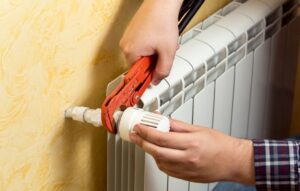Dryers are an essential appliance in many households, providing convenience and efficiency when it comes to drying clothes. However, like any other appliance, dryers can experience problems that require diagnosis and repair. Proper diagnosis is crucial in order to identify the root cause of the issue and effectively fix it. Without proper diagnosis, you may end up wasting time and money on unnecessary repairs or replacements.
Common dryer problems that require diagnosis include failure to start, not heating up, taking too long to dry clothes, making unusual noises, or emitting strange odors. These issues can be caused by a variety of factors, such as faulty heating elements, malfunctioning thermostats, clogged vents, or gas leaks in gas dryers. By understanding the anatomy of a dryer and using the right diagnostic tools, you can effectively diagnose and resolve these problems.
Key Takeaways
- Understanding the anatomy of a dryer is crucial for effective diagnosis.
- Diagnostic tools are essential for accurate and efficient dryer diagnosis.
- A multimeter is a basic but essential tool for diagnosing dryer issues.
- An infrared thermometer can be a useful tool for identifying temperature-related dryer problems.
- Gas leak detectors are a must-have tool for diagnosing gas dryer issues.
Understanding the Anatomy of a Dryer
To effectively diagnose and repair a dryer, it is important to have a basic understanding of its anatomy. A typical dryer consists of several key components, including the drum, heating element, thermostat, motor, belt, and control panel.
The drum is where you place your clothes for drying. It rotates with the help of a motor and belt, allowing the clothes to tumble and dry evenly. The heating element is responsible for generating heat to dry the clothes. It is usually located at the back or bottom of the dryer and can be accessed by removing the back panel.
The thermostat regulates the temperature inside the dryer. It ensures that the dryer does not overheat by turning off the heating element when the desired temperature is reached. The motor powers the drum rotation and other functions of the dryer. The control panel allows you to select different drying settings and monitor the progress of your laundry.
Each part of a dryer plays a crucial role in its overall function. Understanding how these parts work together can help you identify which component may be causing the problem and guide you in the diagnostic process.
The Importance of Diagnostic Tools for Dryers
Diagnostic tools are essential for effective dryer diagnosis and repair. These tools allow you to accurately measure and analyze various aspects of the dryer’s performance, such as temperature, voltage, gas leaks, and ventilation. Without the use of diagnostic tools, it can be challenging to pinpoint the exact cause of a dryer problem.
Using diagnostic tools for dryer diagnosis offers several benefits. Firstly, it saves time and money by helping you identify the root cause of the problem quickly and accurately. Instead of guessing or replacing parts randomly, diagnostic tools provide concrete data that can guide your repair efforts.
Secondly, diagnostic tools help ensure safety during the repair process. For example, a gas leak detector can help you identify any potential gas leaks in a gas dryer, preventing dangerous situations. By using the right tools, you can minimize risks and ensure a safe working environment.
Lastly, diagnostic tools can help extend the lifespan of your dryer. By identifying and resolving issues early on, you can prevent further damage and avoid costly repairs or replacements in the future. Regular maintenance and diagnosis using diagnostic tools can help keep your dryer running smoothly for years to come.
Multimeter: The Basic Diagnostic Tool for Dryers
A multimeter is a basic but essential diagnostic tool for dryer repair. It is used to measure electrical values such as voltage, current, and resistance. By using a multimeter, you can test various components of the dryer’s electrical system to identify any faults or malfunctions.
To use a multimeter for dryer diagnosis, start by unplugging the dryer from the power source and ensuring that it is completely disconnected. Set your multimeter to the appropriate setting for the measurement you want to make (e.g., voltage or resistance). Then, follow the specific instructions for testing each component.
For example, if your dryer is not heating up, you can use a multimeter to test the heating element for continuity. Set the multimeter to the resistance setting and touch the probes to the terminals of the heating element. If the multimeter shows a reading of zero or very low resistance, it means that the heating element is functioning properly. If there is no continuity, it indicates a faulty heating element that needs to be replaced.
Similarly, you can use a multimeter to test other components such as thermostats, fuses, and switches. By systematically testing each component, you can identify the faulty part and proceed with the necessary repairs.
Infrared Thermometer: A Useful Tool for Dryer Diagnosis
An infrared thermometer is another useful tool for dryer diagnosis, especially when it comes to temperature-related issues. It allows you to measure surface temperatures without making direct contact with the object being measured.
To use an infrared thermometer for dryer diagnosis, simply point the device at the area you want to measure and press the trigger. The infrared thermometer will emit a laser beam that indicates the spot being measured. The device will then display the temperature reading on its screen.
For example, if your dryer is not drying clothes properly or taking too long to dry, you can use an infrared thermometer to measure the temperature inside the drum. Simply open the dryer door and point the infrared thermometer at different areas of the drum while it is running. The readings should be consistent and within the expected range for optimal drying.
If you notice significant variations in temperature or if the readings are consistently below or above the expected range, it may indicate a problem with the heating element, thermostat, or ventilation system. Further diagnosis and repairs may be necessary to resolve the issue.
Gas Leak Detector: A Must-Have Tool for Gas Dryers
If you have a gas dryer, a gas leak detector is a must-have tool for diagnosis and repair. Gas leaks can be extremely dangerous and pose a serious risk to your safety. A gas leak detector allows you to quickly and accurately detect any gas leaks in your dryer, ensuring a safe working environment.
To use a gas leak detector, start by turning off the gas supply to the dryer and unplugging it from the power source. Follow the specific instructions provided with your gas leak detector to ensure proper usage. Typically, you will need to hold the detector near the gas connections and fittings of the dryer while it is running. The detector will emit an audible alarm or display a visual indication if it detects any gas leaks.
If the gas leak detector indicates a gas leak, it is important to take immediate action. Turn off the gas supply to the dryer and contact a professional technician for further diagnosis and repair. Gas leaks should never be ignored or attempted to be fixed by an untrained individual.
Diagnostic Software: An Advanced Tool for Dryer Diagnosis
Diagnostic software is an advanced tool that can be used for complex dryer diagnosis. It is typically used by professional technicians and allows for in-depth analysis of various aspects of the dryer’s performance.
Diagnostic software works by connecting the dryer to a computer or mobile device via a USB or wireless connection. The software then collects data from the dryer’s sensors and provides detailed reports and analysis. This data can help identify specific issues, monitor performance trends, and guide repair efforts.
To use diagnostic software for dryer diagnosis, you will need compatible software and hardware, as well as access to the dryer’s control board or electronic control system. Follow the specific instructions provided with the software to establish a connection between the dryer and your computer or mobile device. Once connected, you can run diagnostic tests, view error codes, and analyze performance data.
Diagnostic software is particularly useful for diagnosing complex issues that may not be easily identified using basic diagnostic tools. It provides a more comprehensive understanding of the dryer’s performance and can help pinpoint specific problems that may require specialized repairs or replacement parts.
Ventilation Tester: A Tool for Diagnosing Dryer Ventilation Issues
Proper ventilation is crucial for the efficient and safe operation of a dryer. A ventilation tester is a tool that allows you to measure and analyze the airflow and pressure in the dryer’s ventilation system. It can help identify any blockages, restrictions, or leaks in the venting system that may be affecting the dryer’s performance.
To use a ventilation tester, start by disconnecting the dryer from the power source and ensuring that it is completely disconnected. Follow the specific instructions provided with your ventilation tester to ensure proper usage. Typically, you will need to attach the tester to the venting system using the appropriate adapters and hoses. The tester will then measure the airflow and pressure within the system and provide readings on its display.
If the ventilation tester indicates low airflow or abnormal pressure readings, it may indicate a blockage or restriction in the venting system. This can lead to longer drying times, inefficient operation, and potential safety hazards. In such cases, it is important to clean or repair the venting system to restore proper airflow and ensure optimal dryer performance.
Thermal Imaging Camera: A High-Tech Tool for Dryer Diagnosis
A thermal imaging camera is a high-tech tool that can be used for advanced dryer diagnosis. It allows you to visualize and analyze temperature variations in different parts of the dryer, helping to identify potential issues or malfunctions.
A thermal imaging camera works by detecting infrared radiation emitted by objects and converting it into a visible image. It can accurately measure surface temperatures and display them as color-coded images or temperature readings.
To use a thermal imaging camera for dryer diagnosis, simply point the camera at different parts of the dryer while it is running. The camera will display a real-time image that shows temperature variations in different colors. Hotter areas will appear as red or yellow, while cooler areas will appear as blue or green.
By analyzing the thermal images, you can identify any abnormal temperature patterns that may indicate a problem. For example, if certain areas of the dryer are significantly hotter than others, it may indicate a faulty heating element or poor ventilation. Further diagnosis and repairs may be necessary to resolve the issue.
Essential Tips for Using Diagnostic Tools for Dryers
When using diagnostic tools for dryer diagnosis, it is important to follow some essential tips to ensure safety and effectiveness:
1. Read the instructions: Always read and understand the instructions provided with each diagnostic tool before use. This will help you use the tool correctly and avoid any potential risks or damage.
2. Wear protective gear: When working with diagnostic tools, especially those that involve electricity or gas, always wear appropriate protective gear such as gloves, safety glasses, and a mask if necessary.
3. Disconnect power sources: Before using any diagnostic tool, make sure to disconnect the dryer from the power source and ensure that it is completely disconnected. This will prevent any electrical shocks or accidents.
4. Use the right tool for the job: Different dryer problems may require different diagnostic tools. Make sure to use the appropriate tool for the specific issue you are trying to diagnose.
5. Seek professional help if necessary: If you are unsure about how to use a diagnostic tool or if the problem seems too complex to diagnose on your own, it is always best to seek professional help. A trained technician can provide expert diagnosis and repair services.
In conclusion, proper diagnosis is crucial for effective dryer repair. By understanding the anatomy of a dryer and using the right diagnostic tools, you can accurately identify and resolve common dryer problems. Diagnostic tools such as multimeters, infrared thermometers, gas leak detectors, diagnostic software, ventilation testers, and thermal imaging cameras provide valuable data and insights that can guide your repair efforts.
It is important to use these diagnostic tools safely and effectively by following the instructions provided and wearing appropriate protective gear. Additionally, if you are unsure about how to use a diagnostic tool or if the problem seems too complex to diagnose on your own, it is always best to seek professional help. A trained technician can provide expert diagnosis and repair services, ensuring the safety and optimal performance of your dryer.
What are the common tools used for diagnosing both dryers and washers?
When it comes to diagnosing washer and dryer issues, having the right diagnosis washer tools essentials is crucial. Common tools used for diagnosing both dryers and washers include multimeters, thermal fuses, screwdrivers, appliance testers, and thermistors. These tools help technicians pinpoint and fix problems efficiently.
FAQs
What are the essential tools for diagnosing dryers?
The essential tools for diagnosing dryers include a multimeter, a continuity tester, a thermal fuse tester, a vent tester, and a dryer repair manual.
What is a multimeter?
A multimeter is a tool used to measure electrical voltage, current, and resistance. It is essential for diagnosing electrical problems in dryers.
What is a continuity tester?
A continuity tester is a tool used to check if an electrical circuit is complete or broken. It is used to diagnose problems with dryer heating elements and thermostats.
What is a thermal fuse tester?
A thermal fuse tester is a tool used to check if a thermal fuse is working properly. It is used to diagnose problems with dryer overheating.
What is a vent tester?
A vent tester is a tool used to check if the dryer vent is clogged or obstructed. It is used to diagnose problems with dryer airflow and overheating.
Why is a dryer repair manual important?
A dryer repair manual provides detailed instructions and diagrams for diagnosing and repairing common dryer problems. It is an essential tool for any DIY dryer repair project.



